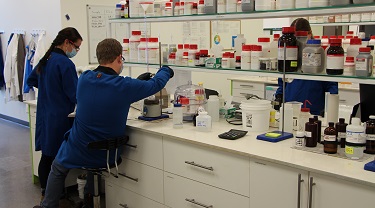On March 25, Indian Prime Minister Narendra Modi took a firm stand on the fight against COVID-19. In an effort to prevent the spread of the deadly disease, Modi imposed a nationwide, three-week lockdown, ordering India’s 1.3 billion people to stay inside until April 14. That lockdown has now been extended until May 3. Business has ground to a halt, all passenger trains—many have been converted into isolation wards for the sick—have been suspended and thousands of migrant workers have been forced to leave the cities to find food and jobs in rural villages.
Which sectors in your region are hardest hit by the pandemic?
The services sector, which contributes close to 55% to the gross domestic product (GDP), is deeply affected. Industries such as construction, real estate and automotive, which employ millions in India, expect to be the worst impacted—both directly and indirectly. The construction and real estate sectors constitute the majority of the unorganized labour force in India and the automotive sector employs a large number of semi-skilled workers on a contract basis. The COVID-19 crisis has resulted in temporary closure of activity in these three sectors, forcing workers to move back to their villages and towns. This will certainly impact rural and urban consumption in the economy over the next couple of quarters or until these workers find jobs under the Government of India’s rural employment guarantee program.
The hospitality and transportation sector, including hotels, restaurants, and airlines, will likely face significant job and revenue losses as well. The infrastructure sector is witnessing headwinds since many projects have been put on hold, while the small- to medium-sized enterprises in the manufacturing sector, which also employs millions, will undoubtedly experience significant business, operational and financial stress, especially now that the lockdown has been extended.
Amidst the present turmoil and uncertainty, there’s a silver lining for certain sectors:
- Pharma and the fast-moving consumer goods (FMCG), including cosmetics, packaged foods and over-the-counter drugs, sector has benefitted the most. For example, the frozen snack business is registering an exponential growth since the lockdown was enforced.
- The loss of business in the low-margin quick service restaurant segment—takeout and fast-food chains—is being replaced in part by demand in the higher-margin retail segment.
- Sugar companies are witnessing a surge in demand for alcohol for the manufacture of hand sanitizers.
- Pharma companies are working overtime to meet the demand for protective gear.
- Health tech entrepreneurs/startups are coming to the forefront to design COVID-19 testing kits, which are economically priced and can be used for testing at home.
What are some of the biggest challenges facing Canadian companies doing business in your region, and what is your advice for managing them?
Canadian businesses operating in India are as badly affected as their competition in market given the need to temporarily halt production to contain the pandemic. This will not only impact immediate demand for their goods and services, but also in the short- to medium-term. The Government of India has also temporarily suspended all international flights into India and the closures of industry have resulted in an approximate 30% reduction in demand for power. All of these will certainly result in an erosion of the internal rate of returns earned by renewable power projects in the short- to medium-term and a liquidity crunch given the need to maintain minimum operations.
Countries have differed in their approach to the COVID-19 crisis, but India has opted for a complete lockdown. Patience, prudence and resilience is what we would advise and taking all possible assistance from EDC personnel on ground, as well as trade commissioners across the seven trade offices in India.
What is the general feeling in your business community?
The business community is in a wait-and-watch situation. The uncertainty regarding the extent and the duration of the pandemic and how business demand will be affected after the lockdown is lifted are real concerns. For sectors such as automotive and transportation, business growth could take until at least Q3 to Q4 in the 2020-2021 fiscal year. For FMCGs, like packaged foods, dry goods, cleaning agents and beauty products, increased demand is expected to be quicker and sharper.

How is EDC helping in market?
Key EDC relationships in market are approaching us to support them via term loans for financing new facilities or refinancing existing facilities that are coming up for repayment in the 2020-2021 fiscal year. We’re also being approached to expedite closure of financings, which are at an advanced stage of due diligence and documentation and for Canadian businesses operating in Canada, we’re guiding them to approach EDC regional offices and their financial institutions to learn more and benefit from the EDC Business Credit Availability Program (BCAP) Guarantee. The new program can help them get the working capital they need to cover payroll and operating costs.






